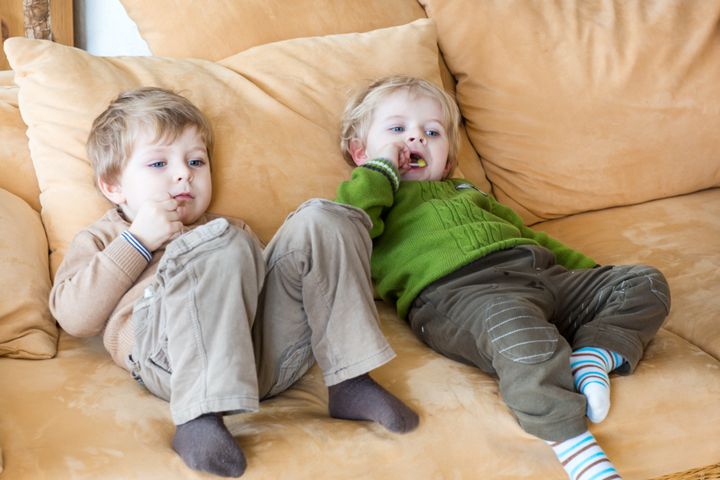
I've written here (more than once) about the need for greater research literacy, not just for the general public but also among journalists, as they are often the public's first line of information and understanding about emerging study findings. This week, we've seen a prime example of how the race for a catchy headline or the editorial bent of a journal can influence how research is characterized in the press. Depending on which sources parents follow, they can come away anxious or reassured (or, likely, confused) by the same data!
The study in question -- "Do television and electronic games predict children's psychosocial adjustment?" by Alison Parkes, Helen Sweeting, Daniel Wight and Marion Henderson -- was published in the Archives of Disease in Childhood on March 25 (it is available to the public for free). It used data from a longitudinal study of a massive cohort of British children to compare media consumption and later reports of "conduct problems, emotional symptoms, peer relationship problems, hyperactivity/inattention and prosocial behavior."
Here, in its briefest form from the online abstract, is the study conclusion: "TV but not electronic games predicted a small increase in conduct problems. Screen time did not predict other aspects of psychosocial adjustment. Further work is required to establish causal mechanisms."
So far, so good. Children who spent considerable time watching television showed a tiny but measurable higher frequency of -- from the list above -- "conduct problems"; the same wasn't true for children who spent similar time with games. The other four behavioral measures above showed no relationship with either form of "screen time." None of the results could be attributed specifically to media consumption.
But, when the press got hold of the study, the result was reminiscent of the John Godfrey Saxe poem, "The Blind Men and the Elephant."
BBC News headlined its article "TV Time 'Does Not Breed Badly Behaved Children.'"
The First approach'd the elephant, and happening to fall, against his broad and sturdy side, at once began to bawl: "God bless me! but the elephant is very like a wall!"
The tabloid Express, however, went for the sensational: "Too much television turns children into monsters, British study finds."
The Second, feeling of the tusk, cried, "Ho! what have we here, so very round and smooth and sharp? To me 'tis mighty clear, this wonder of an elephant, is very like a spear!"
The Belfast Telegraph sought to remain neutral, if uninformative: "TV 'affects children's behaviour."
The Third approached the animal, and happening to take the squirming trunk within his hands, thus boldly up and spake: "I see," quoth he, "the elephant is very like a snake!"
Going global, the study crossed The Atlantic, which got quite specific: "Study: Kids Who Watch 3+ Hours of TV More Likely to Lie, Cheat Later" and, in the subhead referenced "a slightly increased risk of becoming bullies by second-grade."
The Fourth reached out his eager hand, and felt about the knee. "What most this wondrous beast is like is mighty plain," quoth he, "'tis clear enough the elephant is very like a tree!"
Of course, a website focused on games would be drawn straight to the lack of bad behavioral correlations with interactive technologies, and turn a neutral to a benefit: "Video Games: Better Than TV For Kids?"
The Fifth, who chanced to touch the ear, said: "E'en the blindest man can tell what this resembles most; deny the fact who can, this marvel of an elephant is very like a fan!"
There were plenty of other headlines, across the spectrum: "...will not harm your children," "TV not to blame if kids behave badly," "...in more fights," "...ban under threes from watching...," "may not be as bad as for kids as previously thought." Almost all, in the headers or the articles beneath, attributed their large-font claims to the same study, despite reaching contradicting slants, conflating correlation and causation, and exaggerating the effect size.
Like the blind men and the elephant, the reporters and headline writers grasped what they could, then told the story as they perceived it. Fortunately, Britain's National Health Service must have read to the end of the poem: "And so these men of Indostan disputed loud and long; each in his own opinion exceeding stiff and strong. Though each was partly in the right, and all were in the wrong!." The NHS noted this ping-pong match of headlines, as a lead-in to a thoughtful, plain-spoken deconstruction and analysis of the research.
Sadly, far more people will read the broadsheets, tabloids, magazines and blogs than the NHS's piece. This is why parents feel confused and guilty about media, rather than feeling informed and capable of critical analysis of its role in their own families' lives and values.